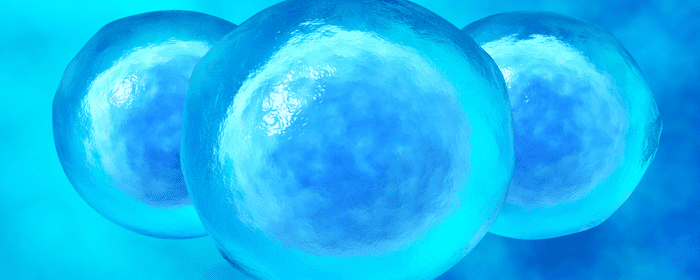
by admin | Apr 17, 2025 | ALS, Alzheimer’s Disease, Neurodegenerative Diseases, Parkinson's Disease, Stem Cell Research, Stem Cell Therapy
Neurodegenerative diseases like Parkinson’s disease (PD), Alzheimer’s disease (AD), and amyotrophic lateral sclerosis (ALS) are among the most challenging medical conditions to treat. These disorders involve the gradual breakdown and loss of neurons in specific areas of the nervous system, leading to symptoms such as memory loss, paralysis, and impaired movement or cognition.
Despite decades of research and billions of dollars in clinical trials, researchers have yet to find a cure for these conditions, and even effective treatments remain limited. As a result, neurodegenerative diseases place a significant emotional, physical, and economic burden on individuals, families, and healthcare systems worldwide.
In this review, Sivandzade et al. summarize the current knowledge of stem-cell-based therapies in neurodegenerative diseases and the recent advances in this field.
The Potential of Stem Cells in Treating Neurodegenerative Disorders
In recent years, regenerative medicine, particularly stem cell therapy, has emerged as an exciting new frontier in the treatment of neurodegenerative diseases. Stem cells have the remarkable ability to become various types of specialized cells in the body. In the context of neurodegenerative diseases, they may be able to repair damaged tissue, replace lost neurons, or create a healthier environment in the brain or spinal cord that helps preserve existing cells.
This unique potential has led researchers to explore whether stem cells could help slow disease progression, reduce symptoms, or even restore lost function in patients affected with these conditions.
Stem Cell Therapy Approaches in Neurological Disorders
Stem cell therapy strategies for neurodegenerative diseases typically fall into two main approaches. The first involves directly replacing the specific types of neurons that are lost during the disease process. For example, researchers aim to generate dopamine-producing neurons for patients with PD or restore damaged motor neurons in people with ALS. The second approach focuses on environmental enrichment, where stem cells are used to support the body’s own repair mechanisms. According to the authors, this could involve delivering neuroprotective growth factors like brain-derived neurotrophic factor (BDNF) or glial cell line-derived neurotrophic factor (GDNF), which help nourish and protect surviving neurons.
Recent research has also explored combining both strategies – using stem cells to replace lost cells while simultaneously enhancing the surrounding environment.
Stem Cell Therapy for Parkinson’s Disease
In Parkinson’s disease, the main issue is the gradual loss of dopamine-producing neurons in a part of the brain called the substantia nigra. This loss leads to symptoms like tremors, muscle rigidity, and slowed movement, usually appearing in people between their 50s and 70s.
Current treatments focus on increasing dopamine levels or using deep brain stimulation to control symptoms. While helpful, these options do not stop or reverse the underlying neuron loss. Stem cell therapy offers a promising alternative by aiming to replace the lost dopamine neurons or protect those that remain.
Recent studies have used embryonic stem cells (ESCs) to produce new dopamine-producing cells that can be transplanted into animal models of PD. These cells have shown the ability to migrate to damaged areas and improve motor function. However, ESCs come with ethical concerns and a risk of tumor formation, which has limited their use in human trials.
Mesenchymal stem cells (MSCs) have also shown potential in PD animal models by helping rebuild damaged dopamine nerve networks. Additionally, induced pluripotent stem cells (iPSCs) – adult cells reprogrammed to act like embryonic stem cells – have recently gained attention because they can be used to generate personalized dopamine-producing neurons without the ethical concerns associated with ESCs. These iPSC-derived neurons have shown promising results in animal models, surviving and integrating into the brain while improving motor symptoms.
Stem Cell Therapy for Alzheimer’s Disease
For patients with Alzheimer’s disease, the situation is more complex. AD is the most common neurodegenerative disease, affecting over 5 million Americans. It leads to memory loss, confusion, impaired judgment, and eventually complete cognitive decline. The disease is marked by the buildup of two harmful proteins in the brain: amyloid-beta, which forms plaques outside neurons, and tau, which forms complex tangles inside them. These protein abnormalities disrupt communication between brain cells and eventually cause them to die. Current medications focus on improving symptoms and slowing progression, but they do not reverse the damage.
Stem cell therapy for AD focuses on restoring lost neurons and improving the brain’s ability to function and heal. Studies using human neural stem cells in animal models of Alzheimer’s have shown that these cells can improve learning and memory, possibly by enhancing synaptic plasticity and increasing the production of proteins involved in cognitive function.
However, challenges remain, including understanding how these stem cells exert their effects and controlling the formation of unwanted cell types. Researchers are currently exploring the use of nerve growth factor (NGF) in combination with stem cells to protect existing neurons and encourage the growth of new ones.
NGF gene therapy has shown promise in early trials and may help amplify the positive effects of stem cell treatment.
Stem Cell Therapy for ALS (Amyotrophic Lateral Sclerosis)
Amyotrophic lateral sclerosis, or ALS, is another devastating condition in which motor neurons in the brain and spinal cord gradually die, leading to muscle weakness, paralysis, and ultimately death, typically within a few years of diagnosis. Most cases are sporadic and occur without a clear genetic cause, though some cases are linked to inherited gene mutations. Because multiple mechanisms may contribute to the disease, including protein misfolding, oxidative stress, and inflammation, it has been extremely difficult to find effective treatments.
Stem cell research in ALS is still in the early stages, but it holds potential. The goal is not necessarily to replace the lost motor neurons – which is extremely difficult – but rather to create a supportive environment that preserves the neurons that remain and slows disease progression.
Some clinical trials have tested the use of MSCs and neural stem cells (NSCs) injected directly into the spinal cord. Results from these early studies suggest that the treatments are safe and may help stabilize function in some patients. In animal models, stem cell transplants have been shown to reduce inflammation, promote motor neuron survival, and improve muscle strength.
As with other neurodegenerative diseases, the success of stem cell therapy in ALS will likely depend on a deeper understanding of disease mechanisms and finding the best ways to target and deliver treatment.
The Future of Stem Cell Therapy for Neurodegenerative Diseases
While stem cell therapy is not yet a viable cure for neurodegenerative diseases, Sivandzade et al. believe it represents one of the most promising paths forward. The ability to regenerate or repair damaged tissue offers hope where traditional therapies have fallen short. As research continues to advance, more clinical trials are likely to explore the safety and effectiveness of these treatments, along with better methods for personalizing therapies and improving the delivery of stem cells to targeted areas within the nervous system.
Source: Sivandzade F, Cucullo L. Regenerative Stem Cell Therapy for Neurodegenerative Diseases: An Overview. Int J Mol Sci. 2021 Feb 22;22(4):2153. doi: 10.3390/ijms22042153. PMID: 33671500; PMCID: PMC7926761.

by admin | Aug 3, 2024 | ALS, Mesenchymal Stem Cells, Stem Cell Research, Stem Cell Therapy
Amyotrophic Lateral Sclerosis (ALS) is a degenerative disease that affects motor neurons in the brain and spinal cord, leading to muscle paralysis and death, typically within 3-5 years of onset. Despite two FDA-approved therapies, Riluzole, and Edravarone, which offer limited benefits, there remains no cure for ALS.
Considering this, researchers have turned to Mesenchymal Stem Cells (MSCs), which have shown promise in animal models and preliminary human trials for neurodegenerative diseases, including ALS.
Understanding ALS and MSC Therapy
ALS is characterized by the rapid degeneration of motor neurons, leading to muscle paralysis. The exact cause of ALS is complex and not fully understood. About 10% of cases are familial, while 90% are sporadic. Existing treatments only modestly slow disease progression and extend survival by a few months.
Stem cells, particularly MSCs, have shown potential in neuroprotection and immunomodulation. MSCs can be derived from various sources, including bone marrow, adipose tissue, embryonic tissue, cord blood, reprogrammed mature cells, and perinatal tissue. They support hematopoiesis and produce mesodermal cells. MSCs have demonstrated immunomodulatory and neurotrophic effects in animal models and early human trials.
As part of this study, Petrou et al. aimed to evaluate the safety and efficacy of repeated spinal injections of autologous MSCs in ALS patients. This open-label clinical trial included patients aged 20-70, with definite ALS diagnoses and ALS Functional Rating Scale Revised (ALSFRS-R) scores above 20. The patients received 1-4 intrathecal MSC injections at intervals of 3-6 months, with safety and tolerability as primary endpoints, and efficacy as secondary endpoints.
This trial found no serious adverse events, demonstrating the safety of repeated MSC injections. As evidence, the authors point out that, 15 out of 19 patients showed a reduction in the progression rate of their ALSFRS-R scores by more than 25% between the first and second injections, with an average improvement of 107.1%. Similar improvements were observed between subsequent injections. Thirteen patients experienced a 25% improvement in their progression rate over the entire treatment period, with an average improvement of 47.4%. Seven patients showed clinical improvement after the first transplantation, and five remained improved after the second cycle. These benefits were correlated with the intervals between the injections, suggesting that regular MSC administrations might be crucial for sustained efficacy.
Previous Studies on MSCs in ALS
Several small, open-label clinical trials have suggested that MSC treatment can be beneficial for neurological diseases, including ALS. In a phase I/II trial by the same research group, ALS patients received intrathecal and intravenous MSC injections, which were safe and showed a trend toward disease stabilization over six months. Another phase I/II and IIa trial with Brainstorm® used modified MSCs producing neurotrophic factors (MSC-NTF), showing at least a 25% improvement in disease progression, particularly in the intrathecally treated group.
Additional trials, including a randomized, placebo-controlled phase II study, demonstrated mixed results. While some trials noted improvements in a subgroup of rapid progressors, others did not show significant differences between MSC-treated and placebo groups overall. These studies highlight the need for repeated injections to maintain the benefits of MSC therapy.
Implications From the Current Study
According to Petrou et al., repeated intrathecal injections of MSCs over a longer follow-up period appears to induce significant, but short-term, clinical improvements and slow disease progression in a majority of patients. This study also reaffirmed the safety profile of MSC, with only mild and transient adverse events observed.
The study highlights the potential of MSC therapy in providing neuroprotection and slowing ALS progression. The immunomodulatory effects of MSCs, possibly reducing inflammation in the central nervous system, may also contribute to their therapeutic benefits. However, the small sample size and open-label design are limitations, necessitating larger, controlled trials to confirm these findings.
Future Directions
Petrou et al. concluded that repeated intrathecal injections of autologous MSCs are safe for ALS patients and suggest potential medium-term clinical benefits. However, larger studies are needed to confirm these findings. The consistent observation of safety and indications of efficacy across multiple cycles of treatment is encouraging, indicating that MSC therapy could slow the progression of ALS and improve patients’ quality of life.
The study’s promising results support the continued exploration of MSC therapy for ALS. The authors call for future trials to focus on optimizing the timing and frequency of MSC injections to maximize clinical benefits. Larger, controlled studies are essential to validate these findings and potentially establish MSC therapy as a viable treatment option for ALS. By addressing the unmet needs in neuroprotection and immunomodulation, MSC therapy holds the potential of improving the quality of life and survival for ALS patients.
Source: Panayiota Petrou, Ibrahim Kassis, Nour Eddine Yaghmour, Ariel Ginzberg, Dimitrios Karussis. A phase II clinical trial with repeated intrathecal injections of autologous mesenchymal stem cells in patients with amyotrophic lateral sclerosis. Front. Biosci. (Landmark Ed) 2021, 26(10), 693–706. https://doi.org/10.52586/4980

by Stemedix | May 13, 2024 | ALS, Neurodegenerative Diseases, Regenerative Medicine, Stem Cell Research, Stem Cell Therapy
Amyotrophic lateral sclerosis (ALS) is a progressive neurodegenerative disease. Patients with this condition often experience a broad range of symptoms that get worse over time. While there’s no known cure, some interventions and regenerative therapies can be helpful.
If you or a loved one has been diagnosed with ALS, it’s important to seek as much information as possible. That way, you can get the proper treatment and know what to expect as the disease manifests in your body. Here’s everything you need to know to be prepared for ALS.
Lou Gehrig’s Disease: The Neurological and Muscular Effects
ALS is also known as Lou Gehrig’s disease. Unfortunately, it has severe effects on your nervous system and muscular function as it progresses.
Amyotrophic lateral sclerosis primarily affects your body’s motor neurons, which are responsible for dictating voluntary movements. Toward the end of the disease’s progression, involuntary movements like breathing can slow or stop entirely.
When your motor neurons can no longer communicate with your muscles properly, your muscles start to waste away. This is called muscular atrophy. Once a muscle has atrophied, it no longer has enough tone to carry out normal movements.
Since ALS is a progressive neurodegenerative disease, the symptoms get worse over time. In the later stages of the disease, ALS patients have trouble speaking, eating, swallowing, and making any voluntary movements at all.
Who Gets ALS? Risk Factors and Genetic Components
Amyotrophic lateral sclerosis is usually a sporadic disease, meaning patients get it randomly without an obvious known cause. In some cases, although very rare, Amyotrophic lateral sclerosis is passed down through families.
Genetic ALS stems from genetic mutations that are then passed on to children of affected parents. These cases only make up 10% or less of all ALS cases.
Sporadic ALS may have certain risk factors, but there are no clear causes. This means scientists can’t yet point to a single cause of developing ALS if it’s not genetic.
Possible Risk Factors for Sporadic Amyotrophic lateral sclerosis
Some loose associations between age, sex, and occupation have been made in relation to Amyotrophic lateral sclerosis cases. The presence of these risk factors does not guarantee that someone will develop ALS.
These possible risk factors include:
- Age: Being 55 to 75 years old
- Sex: Early-life cases are most common in men
- Military service: Veterans may be at higher risk
One possible reason that military veterans are at higher risk for Amyotrophic lateral sclerosis is because of their exposure to toxins like pesticides. Being around harmful chemicals may contribute to the development of this debilitating disease, but scientists aren’t sure of this.
The First Signs of ALS
There are two types of ALS onset — limb onset and bulbar onset. Limb-onset Amyotrophic lateral sclerosis affects your arms or legs or both at the same time. You may notice problems with coordination, fine motor control, walking, and using your hands.
Bulbar-onset ALS first affects the neurons that control your speech and swallowing abilities. You might notice difficulty getting your words out properly or trouble swallowing.
It doesn’t take long for the beginning symptoms of ALS to spread and get worse. This is often how physicians diagnose ALS, as rapidly progressing symptoms usually indicate a serious neurological problem.
Progressive Problems and More Serious Symptoms
As ALS develops, symptoms can become severe and even debilitating. Some patients experience changes seemingly overnight, while others develop more serious symptoms over weeks or months.
The neuron degeneration caused by ALS can start to interfere with essential body functions such as breathing, blinking, and swallowing.
Respiratory Symptoms
Respiration problems are common in end-stage ALS. The muscles in your chest that support breathing may become weak or paralyzed entirely.
Some respiratory symptoms of ALS include:
- Shortness of breath (at rest)
- Excess saliva
- Inability to clear your throat and lungs of mucus
- Pneumonia
- Weak coughing
- Worsened breathing when lying flat
- Respiratory system failure
Hospital interventions usually include ventilators to keep air flowing in and out of the patient’s lungs.
Muscle Stiffness and Atrophy
As Amyotrophic lateral sclerosis interferes with their proper use, your muscles start to lose tone, mobility, and structure. This is known as muscle atrophy and may be accompanied by extreme stiffness.
As Amyotrophic lateral sclerosis progresses, many patients lose the ability to speak loudly. The muscles involved in speech start to freeze up and become paralyzed. This can also cause an inability to swallow.
Extreme Weight Loss
Being unable to consume food and fluids normally can lead to excessive weight loss in late-stage Amyotrophic lateral sclerosis patients. This isn’t a healthy type of weight loss, and it’s usually caused, in part, by loss of muscle mass.
Mental Health Challenges
Amyotrophic lateral sclerosis doesn’t affect your perception or cognition, meaning you can still hear, see, and think normally. Since the person is aware of their deteriorating condition, they may experience depression, anxiety, and other serious mental health challenges. Having a strong support system is key to remaining mentally well through your ALS journey.
Treatment Options for ALS
You can receive treatment for ALS to slow the progression of the disease. While there is no cure, medical intervention can help you maintain your quality of life for a longer period.
ALS Medication
Some medications protect your motor neurons from further damage, which slows the progression of your ALS symptoms. These medications won’t revive damaged or dead neurons, but they can improve your disease prognosis.
Physical and Occupational Therapy
Therapies that involve movement and motor functioning can help you maintain your muscle tone and avoid stiffness. While you still have the ability to move your limbs and smaller muscles, it’s crucial to practice doing so as much as possible. This repetition helps your brain and body stay in a good rhythm and slow motor damage.
Regenerative Medicine
Some innovative treatments, like stem cell therapy for ALS, may improve your quality of life. Regenerative medicine focuses on healing and repairing damaged tissues and cells.
Stem cell therapy uses unspecialized human cells to serve specific purposes throughout the body. In the case of ALS, stem cells are administered so they can differentiate into nerve cells to assist with your functioning and comfort. This may be worth considering if you want to approach your ALS symptoms from all possible angles.
Living With Purpose: Life After an ALS Diagnosis
It’s important to maintain a positive outlook as much as possible. Having the support of medical professionals, family, and friends can make all the difference in your quality of life with Amyotrophic lateral sclerosis. Try not to lose hope; science is progressing toward new treatments every day.

by admin | Feb 22, 2024 | ALS, Stem Cell Research, Stem Cell Therapy
Amyotrophic lateral sclerosis (ALS) is a progressive neurodegenerative disease characterized by loss of upper and lower motor neurons resulting in paralysis, respiratory insufficiency, difficulties speaking and swallowing, stiffness and spasticity, and muscle atrophy. Commonly known as Lou Gehrig’s disease, after the baseball player was diagnosed with it, ALS is diagnosed in an estimated 5,000 Americans each year.
Currently, ALS has a median survival time of 4.32 years and no known cure. As part of the effort to develop new therapeutic options to slow the progression of ALS, stem cell (SC) transplantation has shown potential in recent clinical trials.
In this review, Aljabri et al. examine the results of various clinical trials exploring the use of stem cell therapy as a viable therapy for ALS. Specifically, the authors identified six studies determined to have met the established criteria for review.
As part of this research, the authors examined the efficacy of SC transplantation in patients with ALS. Studies examined included a number of routes of administration, including subcutaneous, combined intrathecal and intramuscular, intravenous and intralumbar injections, and intrathecal approach. These studies all demonstrated slower decline or significant improvement as measured on the ALS Functional Rating Scale (ALSFRS-R).
While there appears to be a benefit in this application, the authors of two of the studies did not observe a significant difference in the efficacy between treatment and placebo groups after injections.
Additionally, the authors noted that all three studies using bone marrow mesenchymal stem cells (BM-MSC) demonstrated a significant decrease in the progression of disease burden and an overall slower decline in the ALSFRS-R score. On the other hand, studies that used granulocyte colony-stimulating factor (G-CSF) did not demonstrate a significant benefit.
While these results are promising, the authors point out limitations of the study that make it difficult to identify the long-term effects and long-term benefits associated with SC therapy. These limitations include short follow-up periods of either 6 or 12 months and the loss of patients during follow-up, both of which compromise the ability to determine long-term benefits and effects with fidelity.
Aljabri et al. also highlights many challenges associated with the introduction of SCs into the CNS. Among these challenges include the increased risk of AEs associated with the multiple SC injections required to deliver therapeutic doses and determining the most appropriate route of injection for therapeutic benefits.
The authors conclude that early clinical trials have made great progress in delineating the safety of SC therapy in the treatment of ALS. What remains to be determined is how effective SCs are compared to other forms of therapy. While the current data of SC therapy hold great promise, more properly designed clinical trials are needed to verify their benefit.
Source: Aljabri A, Halawani A, Bin Lajdam G, Labban S, Alshehri S and Felemban R (2021) The Safety and Efficacy of Stem Cell Therapy as an Emerging Therapy for ALS: A Systematic Review of Controlled Clinical Trials. Front. Neurol. 12:783122. doi: 10.3389/fneur.2021.783122

by admin | Feb 15, 2024 | Peptides, ALS, Alzheimer’s Disease
Alzheimer’s disease (AD) and amyotrophic lateral sclerosis (ALS) are two of the more common neurodegenerative diseases, with nearly seven million people in the US living with the conditions in 2023. While AD is more prevalent than ALS, they are both characterized by the progressive loss of specific neurons and glial cells in the central nervous system.
Research has demonstrated that the onset and progression of neurodegenerative diseases appear to be delayed or improved by the application of neurotrophic factors and that the derived peptide factors from these neurotrophic factors have been found to potentially restore neuronal function, improve behavioral deficits, and prolong their survival.
In this review, Ciesler and Sari review the role of trophic peptides in the improvement of AD and ALS with the goal of developing a better understanding of potential therapies for these neurodegenerative diseases.
While neurodegenerative diseases, including AD and ALS, are well documented to result in debilitating loss of memory and motor function, respectively, the specific mechanisms of action in these diseases are yet to be fully understood. However, research has found that the potential underlying mechanisms can be divided into two categories. The first, which is unique to each neurodegenerative disease, is a specific trigger that activates cell death machinery and the second, which appears to be universal among neurodegenerative diseases, is a directorial process to complete death of a neuron.
While there are currently no effective drugs for the treatment of neurodegenerative diseases, treatments of the symptoms associated with neurodegenerative diseases include neuroprotective factors, encompassing neurotrophins, and neuroprotective peptides. The authors focus this review on NAP peptide derived from activity neuroprotective protein and ADNF-9 peptide derived from activity-dependent neurotrophic factor (ADNF); both of these peptides have been shown to enhance cell survival and outgrowth of dendrites in the form of D-acid analogues.
NAP’s parent protein, ADNP, is essential for brain development and was found to protect neurons against severe oxidative stress. Studies examining NAP have found them to protect against neurotoxins while not affecting cell division. Considering these findings, NAP is now in phase II clinical trials with a primary focus on AD-related cognitive impairment. Additional studies are also evaluating the effects of NAP in ALS models associated with cytoskeletal dysfunction. NAP has been found to extend life span in ALS mouse models when administered prior to disease onset.
ADNF is released in response to vasoactive intestinal peptide that protects neurons from tetrodotoxin-induced cell death and is suggested to be essential for neuronal survival. ADNF-9 showed greater prevention of cell death associated with stress than other ADNF peptides; additional studies demonstrate that ADNF-9 suppressed SOD-1-mediated cell death. While prolonged survival of ALS mouse model was reported to be marginal, the authors highlight that the study did provide insight into a possible treatment for ALS.
The authors also highlight colivelin, a hybrid synthetic peptide of ANDF-9 and humanin, which was found to provide neuroprotection against AD-related memory loss and have a more potent neuroprotective effect than humanin and ADNF-9 when they are tested alone against neurotoxicity.
Ciesler and Sari conclude that in contrast to neurotrophic factors these trophic peptides have the ability to cross the blood-brain barrier for efficacy and have potential for future treatment of ALS and AD.
Source: “Neurotrophic Peptides: Potential Drugs for Treatment of Amyotrophic ….” 8 Apr. 2013, https://www.ncbi.nlm.nih.gov/pmc/articles/PMC3686488/.

by admin | Jan 3, 2024 | ALS, Stem Cell Research, Stem Cell Therapy
Amyotrophic lateral sclerosis (ALS) is a rare, deadly progressive neurological disease that affects the upper and lower motor neurons. Characterized by weakening and gradual atrophy of the voluntary muscles, ALS gradually affects the ability to eat, speak, move, and eventually breathe.
With an estimated survival rate of 2 to 5 years from disease onset, 90% of ALS patients develop sporadic ALS and there is no known cure. Although the cause of ALS remains unknown, there is scientific evidence that both genetics and environment are key contributors. This evidence includes over 30 different gene mutations and a number of environmental factors (exposure to toxins, heavy metals, pesticides, smoking, and diet) have been found to be associated with neurological destruction and ALS development. Additionally, ALS has been found to be approximately 2 times more likely to occur in men than women.
In the search for a definitive cure for ALS, the use of mesenchymal stem cells (MSCs) for both treatment and management of the condition has been increasingly more common in preclinical and clinical studies.
In this review, Najafi et al. discuss multiple aspects of ALS and focus on MSCs’ role in disease management as demonstrated in clinical trials.
MSCs are multipotent cells with immunoregulatory, anti-inflammatory, and differentiation abilities that make them a strong candidate for use in therapeutic applications intending to expand the lifespan of ALS patients.
To date, preclinical research investigating the cause and potential treatment of ALS primarily relies on data gathered from rat and mouse models. As part of these models, researchers have discovered that the transplantation of MSCs through multiple routes (including intrathecal, intravenous, intramuscular, and intracerebral) can be a safe and effective way to delay the decline of motor function and promote neurogenesis.
These preclinical studies have also demonstrated that the administration of MSCs from specific tissues has shown significant advantages in delaying the degeneration of motor neurons, improving motor function, and extending lifespan.
Over 20 years of clinical research have found that direct injection of autologous expanded MSCs is safe and well tolerated and demonstrated a significant decrease in disease progression and increase in life expectancy in patients.
The authors conclude that ALS is a fatal neurodegenerative disease with no definitive cure. However, several preclinical and clinical studies have shown that MSC’s anti-inflammatory, immunoregulator, and differentiation properties, have demonstrated to be a good therapeutic approach for treating ALS.
Source: Najafi S, Najafi P, Kaffash Farkhad N, et al. Mesenchymal stem cell therapy in amyotrophic lateral sclerosis (ALS) patients: A comprehensive review of disease information and future perspectives. Iran J Basic Med Sci. 2023;26(8):872-881. doi:10.22038/IJBMS.2023.66364.14572







 St. Petersburg, Florida
St. Petersburg, Florida
